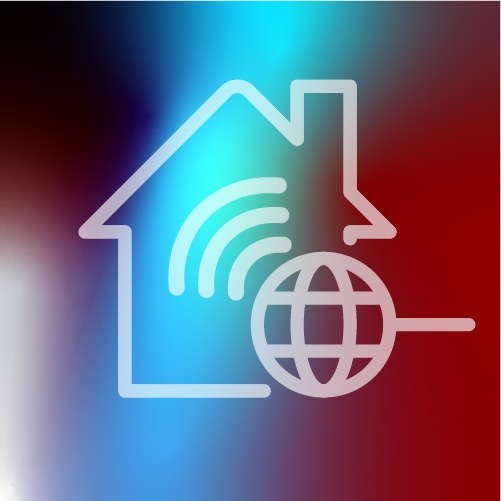How state-level subsidies might refill cable's broadband subscriber tank
Amid pessimism about cable in the face of slowing broadband sub growth, state-level buildout programs for rural US markets 'could play a role in a modest reacceleration,' suggests a top industry analyst.

With US cable broadband subscriber growth remaining flat or going negative, operators are hard-pressed to find a remedy that will rekindle growth in a service category now considered central to the overall business.
"Pessimism reigns" as the market has "unmistakably concluded that the cable industry's slowing broadband subscriber growth reflects competitive share losses to TelCo fiber overbuilds and fixed wireless access," MoffettNathanson analyst Craig Moffett surmised in a fresh report (registration required) sizing up the state of the US broadband industry.
Figure 1:  Click here for a larger version of this image.
Click here for a larger version of this image.
Bundling relatively inexpensive mobile services with home broadband certainly provides a tool to help cable operators retain and even gain some subscribers, but solid momentum in the mobile arena was not enough to completely turn the tide in Q2 2022 for Comcast, Charter Communications and Altice USA, which saw broadband sub growth flatten or go negative in the period.
Analysts are attributing cable's recent broadband subscriber woes to market saturation and market share loss to fiber and fixed wireless access (FWA), but they are still debating which is the primary cause. In either case, cable operators are already responding to the problem by accelerating growth of homes passed through edge-outs, which are network deployments adjacent to existing footprint/facilities, MoffettNathanson explains in the report.
According to MoffettNathanson's analysis, Comcast ended Q2 with a 1.4% growth in homes passed, or 800,000 homes year-over-year, while Charter saw a rise of 1.9%, or 1 million over that period. Both companies' gains were well ahead of general US housing growth.
Recent state-level wins a 'warm-up'
To further remedy the broadband subscriber issue, MoffettNathanson expects US cable operators to accelerate buildout through voluntary edge-outs and participation in programs that subsidize network expansions into underserved or unserved areas, which are largely rural.
While Charter was already a big winner in phase I of the Rural Digital Opportunity Fund (RDOF), MoffettNathanson points out that both Charter and Comcast are now securing a "steady stream of state-level grants for network expansion with state-level subsidies."
Charter, for example, has received state-level grants exceeding $188 million to cover 66,000 locations in parts of Ohio, Kentucky, North Carolina, Indiana, Georgia, Louisiana, Maryland, Alabama and Wisconsin. Meanwhile, Comcast has secured similar state-level grants exceeding $121 million year-to-date, MoffettNathanson estimates. Altice USA is also in the mix, receiving $13 million from Yavapai County, Arizona, to build to 8,000 passings.
Cable's more aggressive involvement in state-level broadband subsidy programs signals a major change, as telcos have tended to be the largest participants in such programs, particularly in rural areas, Moffett points out.
Though the reported state-level amounts won by cable have been relatively small or modest, they are "just a warm-up for the much larger subsidies on tap for next year and beyond that will be appropriated under the JOBS Act," Moffett writes. "They haven't even begun to tap the much larger pool of state-level market expansion subsidies under the Infrastructure (JOBS) Act, which targets an additional ~$42.5B for rural broadband."
Meanwhile, phase II of the RDOF, which will award another $11.2 billion for construction, is still out on the horizon. "However, it is less clear that these funds are still needed or whether they will instead be pushed aside by the much larger BEAD [Broadband Equity, Access, and Deployment] program," Moffett explained.
Whether such pursuits will have a material effect on slowing broadband subscriber growth won't be known for some time. But it could at least open some windows of opportunity as cable operators battle for share in their legacy broadband service footprints.
Still, "state-level rural buildout programs could play a role in a modest reacceleration as passings expand," Moffett suggested.
Subscriber snapshot
Current market conditions have caused Moffett to lower his broadband subscriber forecasts for the two largest US cable operators through 2026.
For 2023, he now expects Comcast to add 422,000 broadband subs, well below an original forecast of +751,000. Charter, meanwhile, is now expected to add 534,000 broadband subs in 2023, compared to a previous estimate of +824,000.
Turning back to Q2 2022, the weakest quarter ever for cable broadband, US cable operators lost about 68,000 subs in the period.
Telco broadband growth also slowed in Q2, with an estimated 72,000 subs lost. MoffettNathanson estimates that there were fiber-to-the-premises net adds of 477,000 in the quarter, up from +395,000 a year earlier, but those gains were still offset by xDSL losses.
FWA's big moment continued, as T-Mobile and Verizon combined to add 816,000 net FWA subs in Q2 2022. "Cable's loss is obviously attributable to FWA's outsized gain," Moffett writes.
Total US terrestrial broadband penetration stood at 85% at the end of Q2 2022. That figure reflects penetration of all occupied US households and doesn't account for an indeterminate number of those households located in rural areas unreached by terrestrial broadband, the analyst points out.
Related posts:
— Jeff Baumgartner, Senior Editor, Light Reading
About the Author(s)
You May Also Like




_International_Software_Products.jpeg?width=300&auto=webp&quality=80&disable=upscale)







